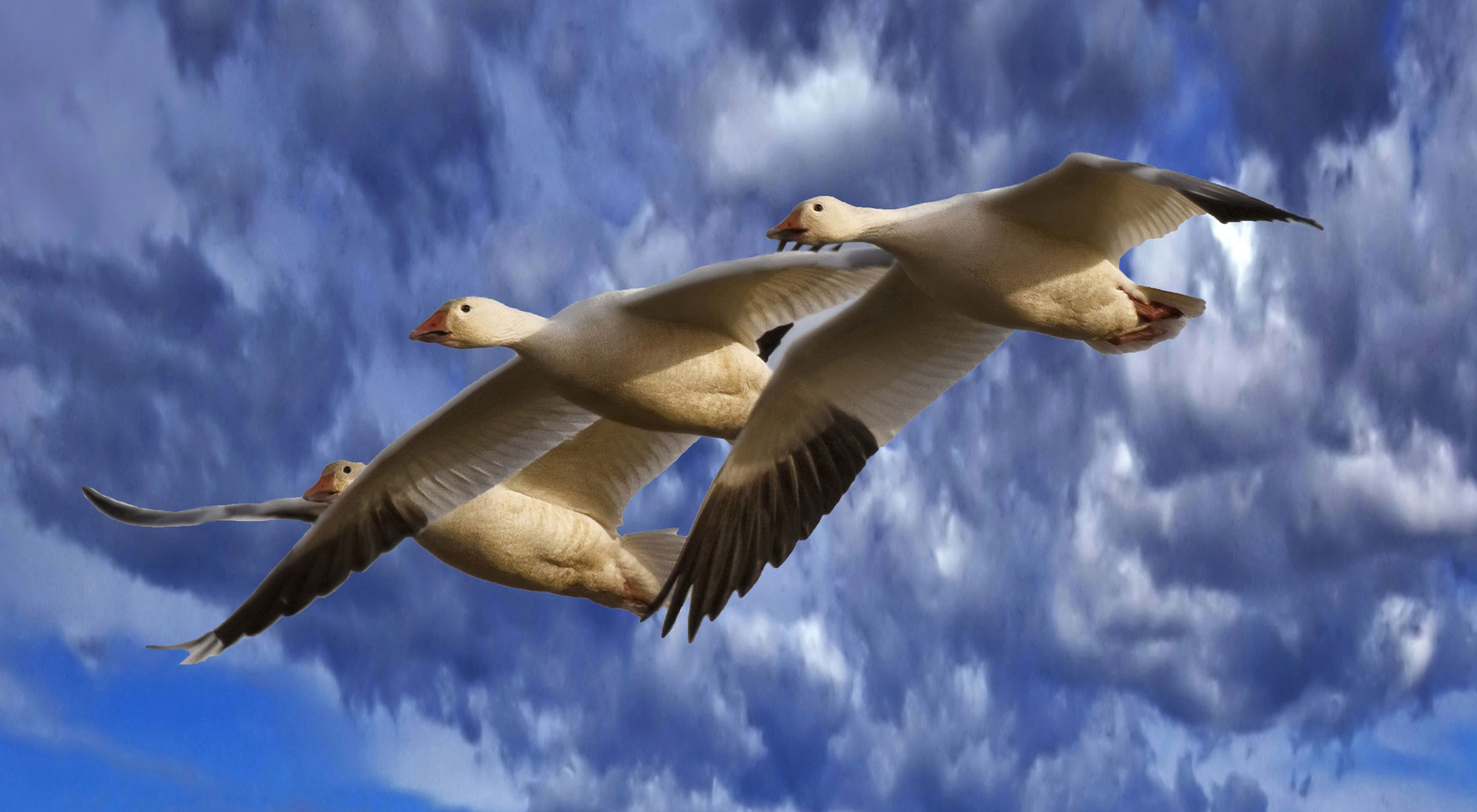Washington's Winter Birds
From year-round residents to rare visitors, winter brings white wings to Washington.
Are you wishing for a bit more brightness these days? Then you should make plans to see our white birds this winter! Our coldest months are a great time to go out and see birds that don’t pass through most of our backyards. Snowy owls, swans, snow geese and ptarmigan boast beautiful, bright plumage during Washington’s winters – a pleasing contrast to our often dark and gray skies.
Snow Geese
For many, Washington’s flocks of winter snow geese are a favorite spectacle. While these birds come here every year, they never fail to amaze. Why? Because they come to western Washington’s greater Skagit Delta by the tens of thousands! When these flocks take off en masse – say, because a bald eagle flies overhead – they are so noisy and dizzying to behold that it’s easy to lose one's balance.
Our snow geese spend their summers on Wrangel Island in Russia. From there they travel approximately 3,000 miles to the Stillaguamish and Skagit river deltas, where they begin to arrive in late September.
Worldwide, snow geese were reduced to only a few thousand around 1900. But they’ve made a remarkable comeback, and now are one of the most abundant waterfowl in the world. They’ve been so successful, in fact, that in some areas they are starting to destroy their own habitat as they tear vegetation out of the ground to eat.
You can check out these amazing birds and more at the annual Port Susan Snow Goose & Birding Festival in February. The website has lots of information about the festival, special events, exploring the area – and of course, snow geese.
Ptarmigan
OK, admittedly ptarmigan aren’t usually easy to see. People who spend time in mountain country are probably more familiar with ridges and other land features named “Ptarmigan” than with these illusive birds. Our native white-tailed ptarmigan live in our mountains year-round, but are difficult to spot thanks to well-camouflaged seasonal plumage. Still, determined, observant and lucky travelers can find them. A friend of mine spied one in January while skiing at the Mount Baker ski resort!
The white-tailed ptarmigan is North America’s smallest grouse. They tend to stay above the tree line and walk most of the time rather than flying. In Washington they are found only in the Cascade Mountains, where they feed mostly on leaves, buds and seeds.

Snowy Owls
Bird lovers are once again aflutter over the arrival of snowy owls. These birds are rare in Washington, but occasionally travel this far from their arctic breeding grounds in surprising numbers – an event known as an “irruption.” For whatever reason, many traveled all the way down to Washington and even farther south last winter. We're fortunate that some are starting to make their way down again this season.
I vividly recall seeing my first snowy owl in Seattle’s Discovery Park several years ago during another irruption. It wasn’t hard to find: I just looked for the small pack of excited bird enthusiasts huddled around spotting scopes. And there it was! A big, beautiful bird perched in the open, as large as a great horned owl but nearly pure white. That particular owl was having a hard time resting while being aggressively harassed by local crows.
I didn't miss the chance to see many more snowies last winter. It was easy to get excited. One piece describes theories about why these irruptions occur.
Swans
Swans migrate from Alaska down to Washington every year. Two kinds of swans make this annual journey: trumpeter swans and tundra swans. Both can be seen at places like western Washington’s Skagit Delta, where they may mingle together. They don’t travel in massive flocks like snow geese (see below), but their big, white bodies are easy to spot in area farm fields.
Our over-wintering swans forage for food in farm fields, but also feed on other local fare. Several years ago I watched a group of swans land gracefully on mud flats at the Conservancy’s Port Susan Bay Preserve. The tide was out and there were many acres of mud. The surface looked rather dull, but underneath were many roots and rhizomes of the plants that burst forth in the spring and create a thriving home for young salmon and lots of other marine life. The swans had come for these roots and, after posing majestically for a few moments, they shoved their entire heads and necks into the mud in search of yummy eats – temporarily dirtying their usually snow-white plumage.
